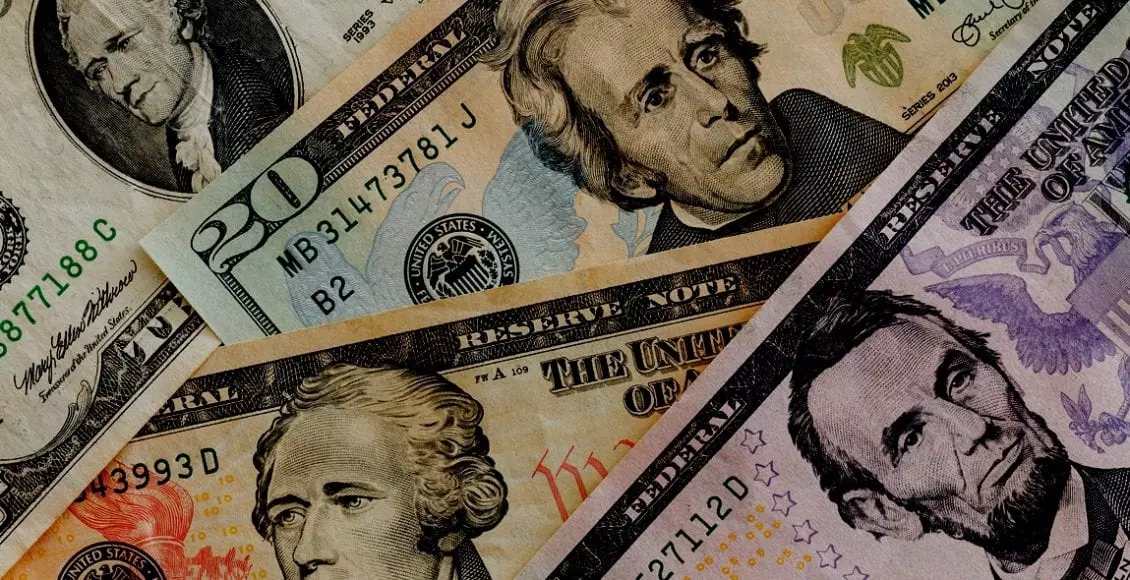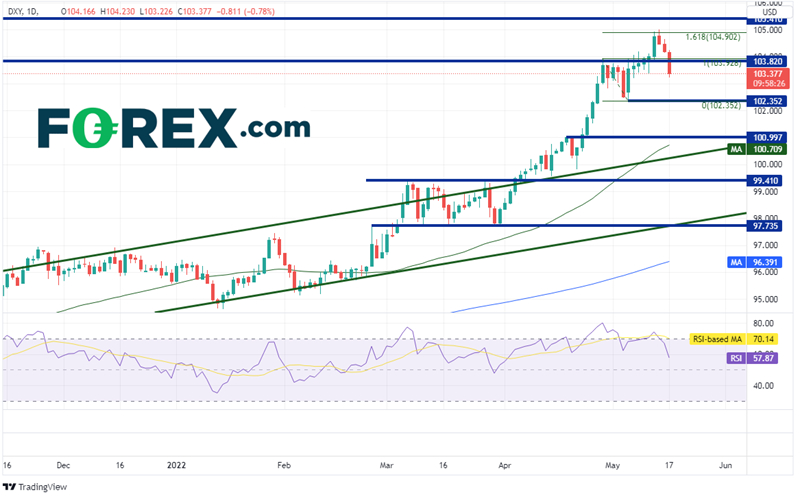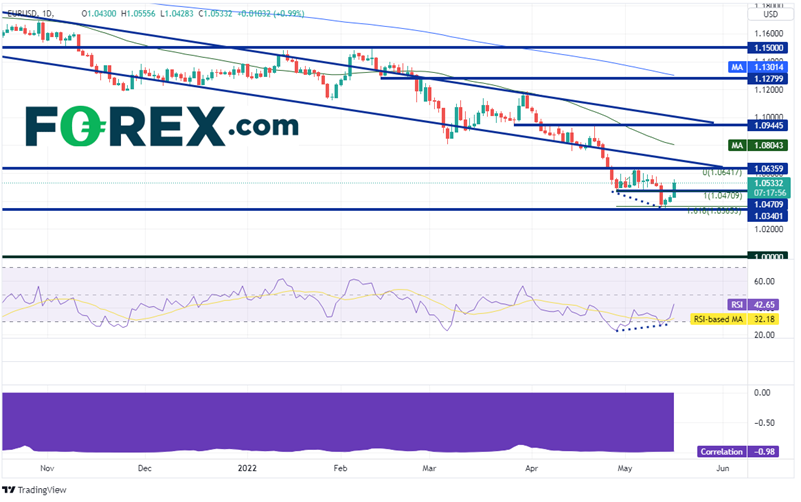The US dollar index retreats and the EUR/USD pair rises on the forex

If you’re worried about how inflation will affect your spending, you can take a deep breath for another month because April’s retail sales numbers were strong. The headline number for April print retail sales was 0.9 percent, which was lower than the expected 0.9 percent and higher than March’s 1.4 percent (which was revised up from 0.5 percent). This is the fourth month in a row that prices have gone up. Printing without autos beat expectations, coming in at 0.6 percent instead of the expected 0.4 percent and 2.1 percent in March, which was changed up from 1.1 percent. The strongest part of the data, though, was the Ex-Gas and Autos component, which was 1%, compared to 0.7% expected and 1.2 (up from -0.1%) in March. With the changes, the data is strong and there are no signs that US consumers are about to stop spending.
The US Dollar Index (DXY) struggled to trade through the 161.8 percent Fibonacci extension from April 28 highs to May 5 lows near 104.90 as bears entered the market and pushed the DXY Index lower over the past 3 days (including today). A low peak from 2002 at 105.41 is the next level of horizontal resistance above. The low from May 5 near 102.35 is the first point of support. Below that, there is horizontal support at the highs from April 19th, near 101.00, just ahead of the 50-day moving average at 100.71.
US Dollar Index (DXY) Daily Chart

forex us dollar index dxy on May 17, 2022
Since 57 percent of the US Dollar Index is made up of the EUR/USD pair, the pair has a strong negative correlation with the DXY Index. The correlation coefficient is -0.98. This is shown in the lower part of the graph. A correlation coefficient of -1.00 means that the two assets always move in the same direction. So, when the DXY moves in one direction, the EUR/USD pair usually moves in the opposite direction.
EUR/USD daily chart

forex eur/usd 17 May 2022
Tradingview and StoneX are sources.
In forex, the EUR/USD pair has been going down for months. When the price of the EUR/USD pair hit a daily high of 1.0936 on April 21, forming a shooting star candlestick, sellers became more aggressive. But the price of the EUR/USD pair did not close below the 161.8 percent Fibonacci extension from the lows on April 28 to the highs on May 5 near 1.0365.
Also, the EUR/USD pair couldn’t break through the lows of 2017 at 1.0340, which is now the first level of support. Below, the EUR/USD pair could fall to the psychological support level at parity, which is a round number (1.0000). At 1.0642, there is the most resistance since May 5. (which merges with the March 2020 pandemic low at 1.0635). The next point of resistance is the downward trendline of the long-term channel near 1.0690, followed by the 50-day moving average at 1.0804.
Don’t ever think too little of an American consumer! Even though inflation was high in April, retail sales stayed strong. Is this just a correction to key levels for the DXY Index and the EUR/USD pair, or will they keep moving in their long-term trends? When Powell speaks later today, traders may find out more.